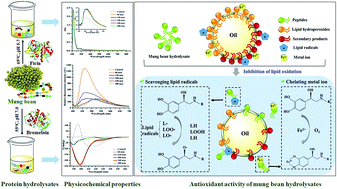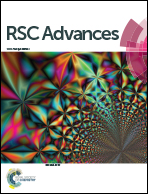Comparative assessment of physicochemical and antioxidative properties of mung bean protein hydrolysates
Abstract
Two commercial plant proteases namely ficin and bromelain, were acquired to hydrolyze mung bean protein over 300 min hydrolysis, and the physicochemical and antioxidative properties of the obtained hydrolysates were investigated. Bromelain-treated mung bean protein hydrolysates presented a higher degree of hydrolysis in comparison with ficin-treated hydrolysates, further modifying their physicochemical and emulsifying properties. All mung bean protein hydrolysates exhibited 50% scavenging of DPPH radical (IC50) in the concentration range from 8.67 to 16.22 μg mL−1. Our results also showed that strong metal ion-chelating activity was found in the ficin- (higher activity) and bromelain-treated protein hydrolysates. In addition, oxidative stability of linoleic acid was significantly enhanced by two selected protein hydrolysates, particularly the bromelain-treated hydrolysate with the highest inhibition effect of linoleic acid oxidation (94.55 ± 0.10%). Interestingly, both of these two hydrolysates could effectively retard lipid oxidation of sunflower oil and sunflower oil-in-water emulsion, while the ficin-treated hydrolysate showed slightly better performance. Therefore, mung bean protein hydrolysates showed potential to inhibit lipid oxidation, which could be advantageous in the food industry for producing fortified food.



 Please wait while we load your content...
Please wait while we load your content...